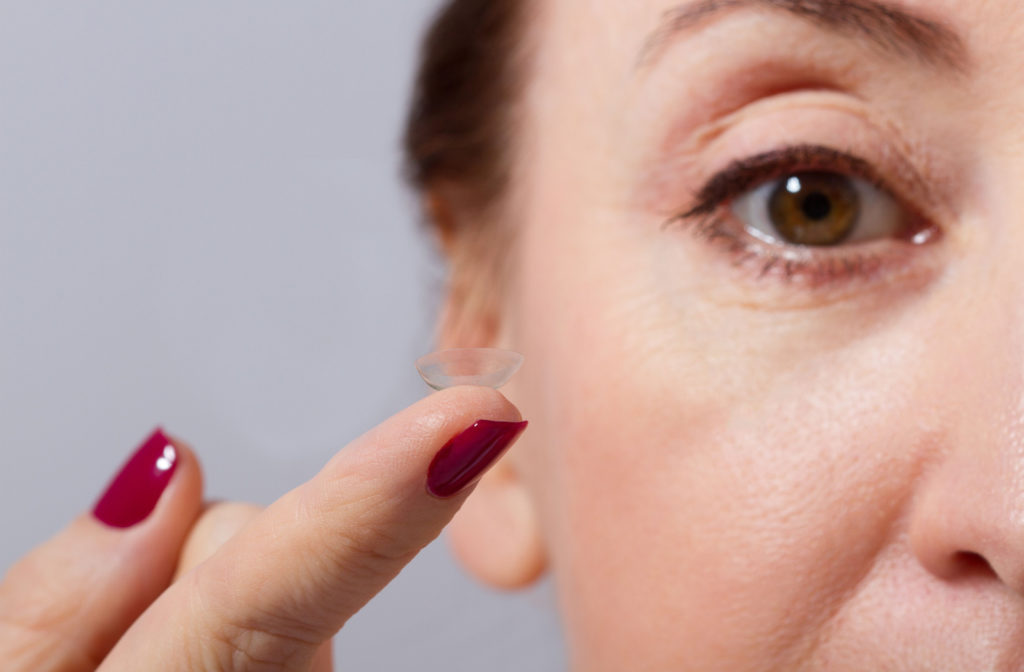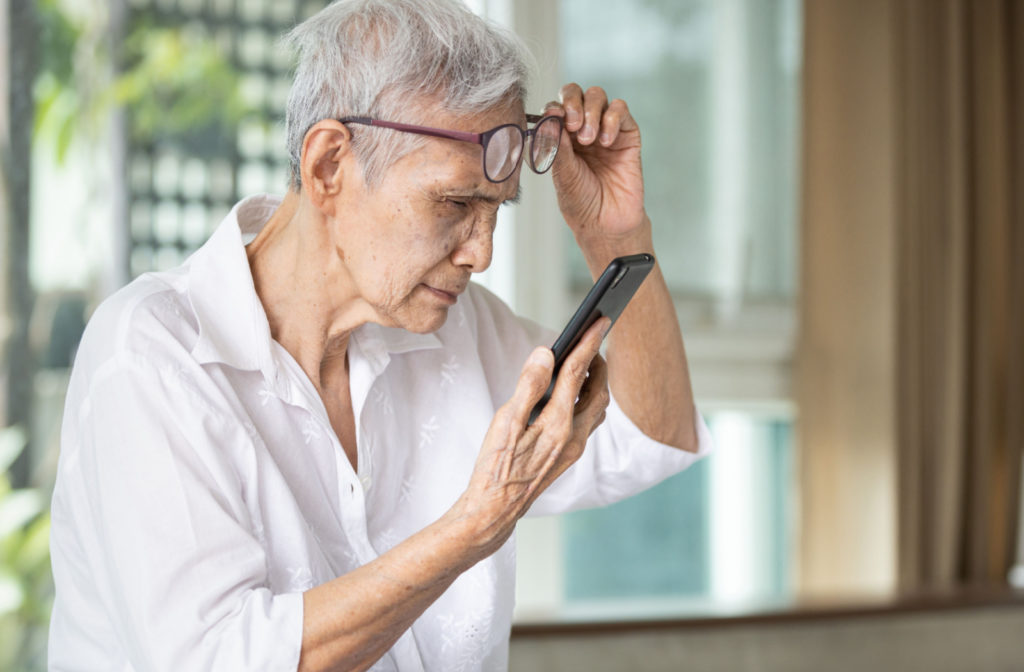If you have a problem seeing objects clearly from a distance but can read books and other nearby materials with ease, you may have myopia. Many people wonder if nearsightedness improves with age or if it is a lifelong condition and what, if anything, they can do to support healthy eyes.
Nearsightedness does not improve with age—it develops in childhood and progresses into adolescence before leveling off in early adulthood. During your annual eye exams, your optometrist will monitor your vision for changes or recommend myopia control methods for your child or teen, or treatment methods for adults.
What Is Nearsightedness?
Nearsightedness, also known as myopia, is a condition that makes it difficult to see objects clearly from a distance. It occurs when the eye is too long, or the cornea is too curved, causing light to focus in front of the retina rather than on it. This makes objects appear blurry or out of focus.
How Does Nearsightedness Progress with Age?
Many people hope that nearsightedness may improve over time. However, this is not usually the case. In most cases, myopia follows a specific trajectory as you age.
Childhood Myopia Progression
The first stage of myopia progression occurs during childhood. Myopia first emerges during childhood, between the ages of 6 and 12, and kids may experience a rapid increase in myopia during this stage. As their eyes grow longer and vision becomes more distorted, children may struggle to read crosswalk signs or the board in class.
Starting myopia control in the initial phase of childhood can help prevent high myopia and the associated eye conditions that can lead to vision loss.
Teenage Myopia Progression
During the teenage years, myopia progression can continue. The eyes continue to grow longer, and vision becomes more distorted. It’s still possible to intervene with myopia control in adolescents—they’re at an age where they can typically manage contact lenses and good contact lens hygiene, so specialty lenses may be an ideal choice to explore.
Adult Myopia Progression
Myopia progression tends to slow down once adulthood is reached. However, this does not mean that adults are entirely not susceptible to myopia progression. Without proper care and treatment, adults may experience worsening myopia, leading to various vision problems and even eye diseases.
Lifestyle and visual demand can impact the progression of myopia in adults. Diabetes, cataracts, and other conditions can affect adult myopia progression. Or, if you have a job emphasizing computer work, you may be at higher risk than someone who works outdoors and not on near tasks.
Factors That Influence Myopia Progression
Various factors can affect myopia progression, such as:
- Genetics
- Age
- Ethnicity
Other factors can increase the likelihood of developing nearsightedness, like a lack of time spent outdoors. Children who spend more time outside are less likely to become nearsighted.
Additionally, close-up work such as reading, typing, and using electronic devices for extended periods can increase the risk of nearsightedness in children and adults.
Understanding these factors can help you take preventive measures to slow down myopia progression and maintain healthy eyesight.

Myopia Management
You can manage myopia progression through various treatment options, such as corrective eyewear, contact lenses, and orthokeratology. Eye doctors can also offer myopia control treatments to help reduce the rate of myopia progression and improve visual function.
Soft Contact Lenses
Soft contact lenses for myopia control use peripheral defocus technology to prompt the brain to inhibit eye elongation. These specialty lenses feel like normal soft contact lenses, making them a safe and comfortable option for myopia control in kids and teens.
Ortho-K
Orthokeratology (ortho-k) are rigid contact lenses worn overnight that reshape the cornea to help light refract on the retina. In the morning, you can remove the lenses and enjoy improved vision with less reliance on corrective lenses during the day.
Explore Myopia Control Methods
While myopia isn’t reversible, vision correction and myopia control methods can help children, adolescents, and adults achieve clearer vision. At San Clemente Optometry, we provide corrective contact lenses and glasses to accommodate your myopia. We also offer myopia control methods, including specialty contact lenses to help slow myopia progression.
Schedule a visit with our team to help manage myopia.



